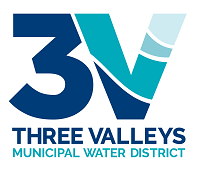Southern California is lucky enough to have different sources of water -- imported, local groundwater, surface water and some recycled supplies. However, even during a rainy year, we are still dependent upon imported supplies to meet all of our demand. If we save water now, realizing that wasting this resource is costly and unnecessary, we can "hedge our bets" against the cyclical droughts that are a part of our normal weather patterns. Since 50% is imported, we are also dependent upon things like snowfall in the Sierra Nevada, supply infrastructure, and maintaining healthy environmental conditions for fish and other wildlife.
Water FAQs
Why is it important to conserve water, even during rainy years?
Southern California imports how much of its water?
Approximately 50%. For the Three Valleys' service area, this imported supply is made up of State Water Project and the Colorado River Aqueduct supplies.
Other sources of imported water for Southern California, include the Los Angeles Aqueduct, which serves the City of Los Angeles only; and the Central Valley Project, which primarily serves agricultural needs in the central valley area.
True or false? Most of the water used in the State of California goes to cities.
False. Approximately 80% of all the water used in California goes to agricultural production. California remains the nation's top agricultural producer. The mild climate (mediterranean) provides for a year-round growing season.
What are the differences between tap water and bottled water?
Tap water is treated by water agencies that are reviewed and required to test their water at least daily, usually serveral times a day. The California Dept. of Public Health oversees public water supplies. Tap water costs LESS THAN a penny per gallon.
Bottled water plants are inspected yearly under the Department of Food and Drug Administration. Costs per bottle of water can be dollars per gallon.
True or False? Public water agencies must provide a quality report yearly to ALL its customers
True. Public water customers may receive a water quality report in the mail, or be informed that it is available on an accessible website. All the constituents in the water and the levels deemed safe for public health are listed on these reports. If you have any questions about any of the figures or chemicals you see noted on this report, you can contact your local water agency (the agency to which you pay your bill) and they will be happy to review the figures on the report with you.
Other Relevant, Interesting Water Websites
California Department of Water Resources: www.water.ca.gov
Metropolitan Water District of Southern California: www.mwdh2o.com
United State Geological Society (USGS) Maps & Current Water Graphs www.usgs.gov/water/
Water Education Foundation: www.watereducation.org
Watershed Education - Surf Your Watershed www.epa.gov/surf
What are some of the acronyms & terms used in the water industry?


